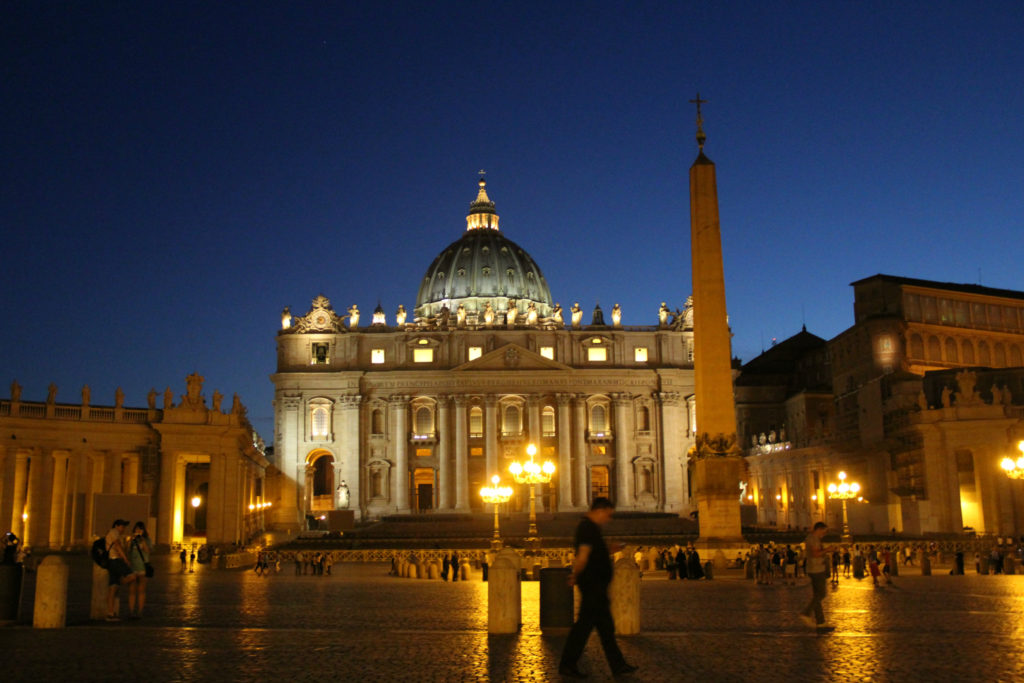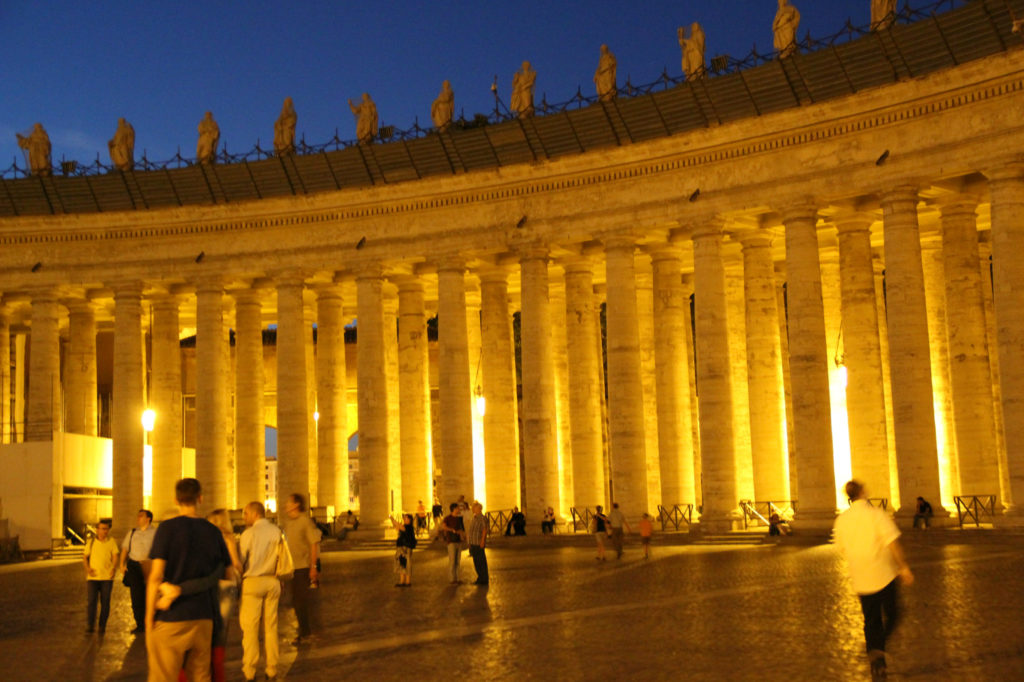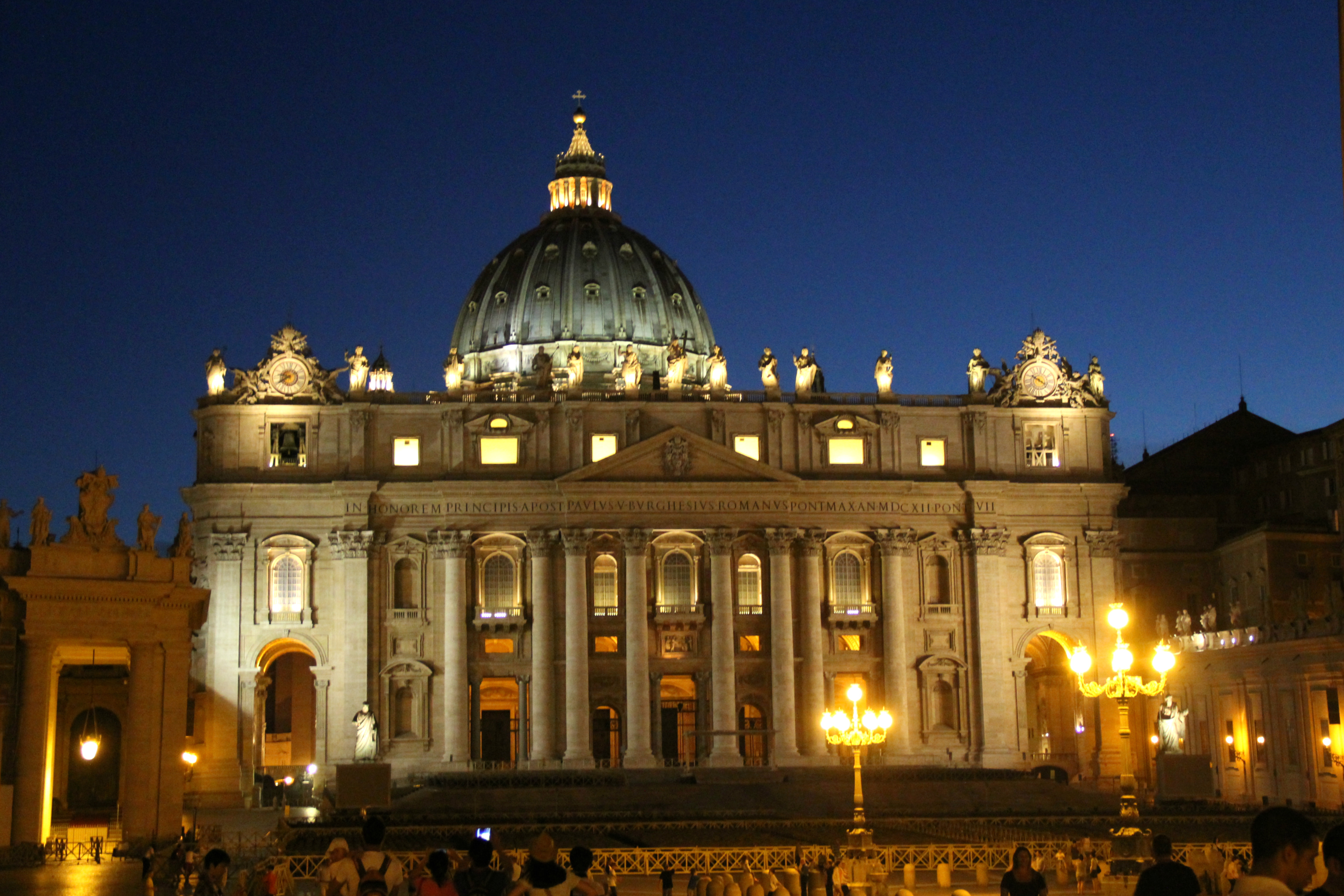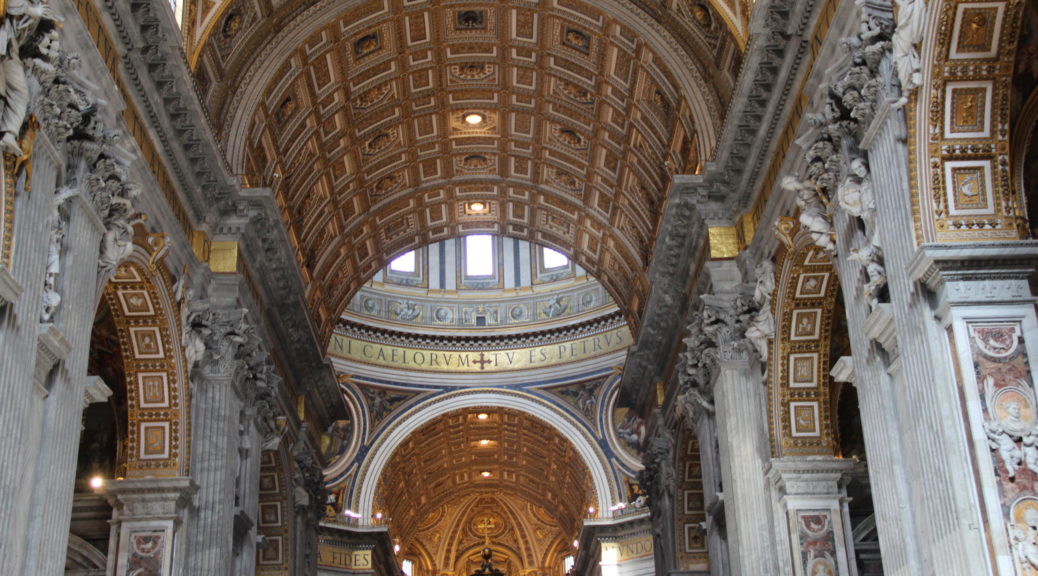
St. Peter’s Basilica
We visited St. Peter’s Basilica on a beautiful day. The Basilica is the largest church in the world and thought to be the burial site of St. Peter. The Basilica replaces an earlier church and was completed in 1626. Across the top of the Basilica are statues of Christ (in the center), St. John the Baptist, the eleven disciples and St. Mathias who replaced Judas. There is also a close-up picture of three of the figures. They are John the Baptist (left), Christ, and St. Andrew (right). The dome was being built by Michelangelo, however only the base was complete when he died. It was completed by his student, Giacomo della Porta.
The obelisk was originally in Egypt and believed to date back to 2500 BC. The obelisk was moved to Rome and placed in the center of an arena in 37 AD. Emperor Nero would make a pubic sport of torturing and killing Christians in the arena. St. Peter was crucified upside down in the arena, believing himself unworthy to be crucified in the same way as Christ. The obelisk was moved to the center of St. Peter’s Square by Pope Sixtus in 1586. He had a cross placed on its top.
The third picture is one of two colonnades. They consist of 284 columns. There are also two fountains, both dating back to the 1600’s.
The pope and the Basilica are protected by the Papal Swiss Guard. Despite looking ceremonial, they are an elite fighting force.
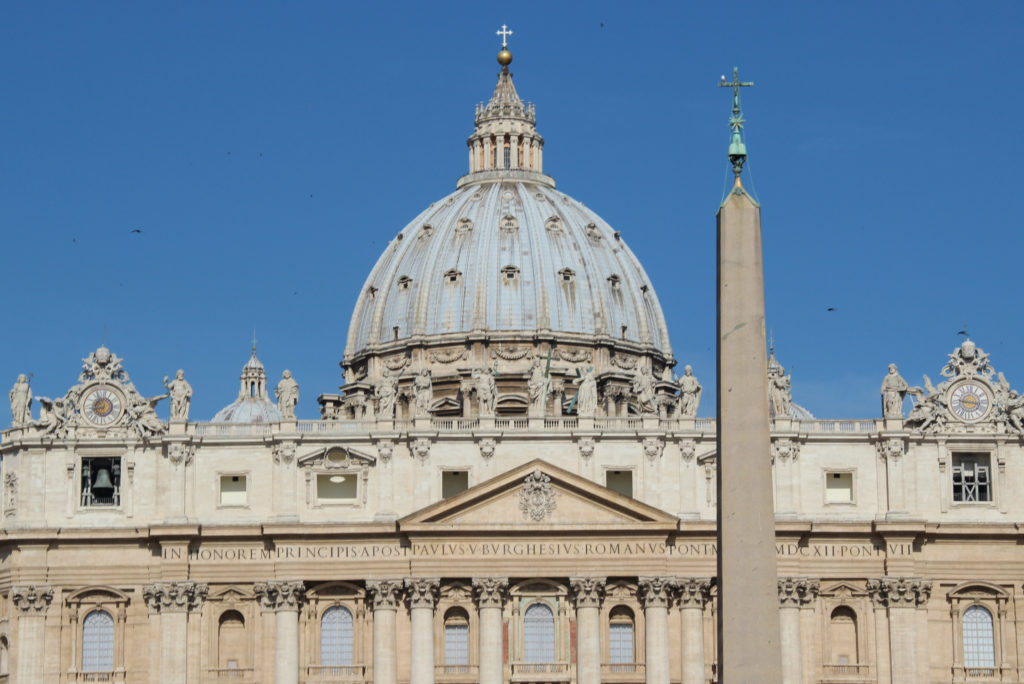
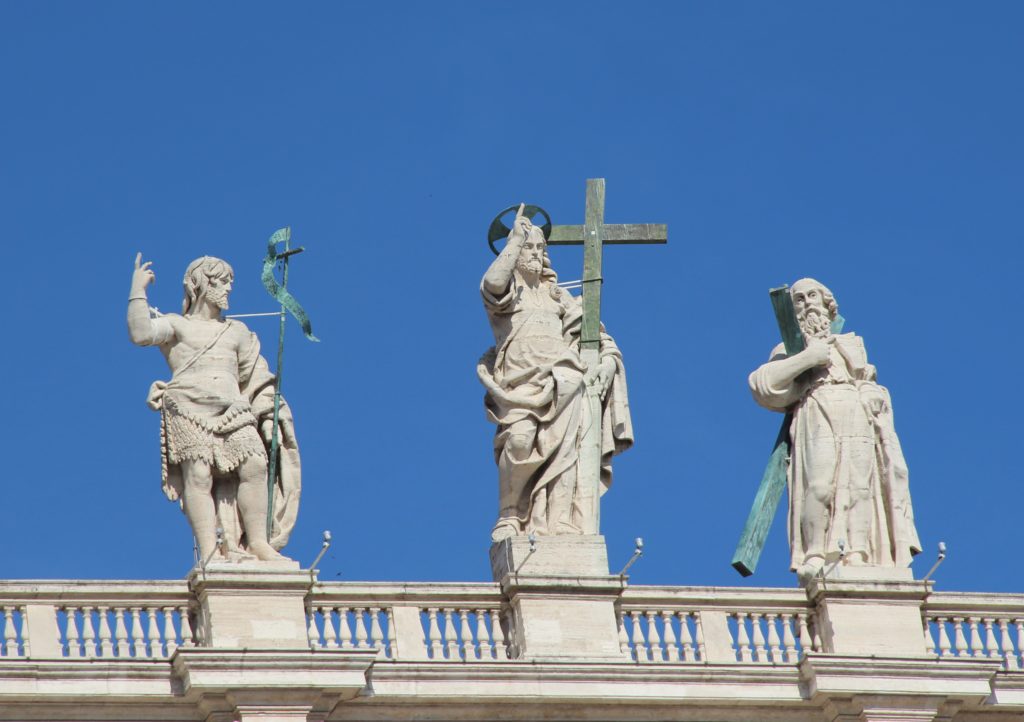


Pictured immediately below is the central balcony which is called the Loggia of the Blessings. The new pope is announced from this balcony with the words, “Habemus Papum.” There are two statues in front of the Basilica. One is St. Peter, who is holding the keys to the church. This represents the authority Christ gave the church to forgive sins. The other statue is St. Paul. He is holding a sword in one hand and a scroll in the other.

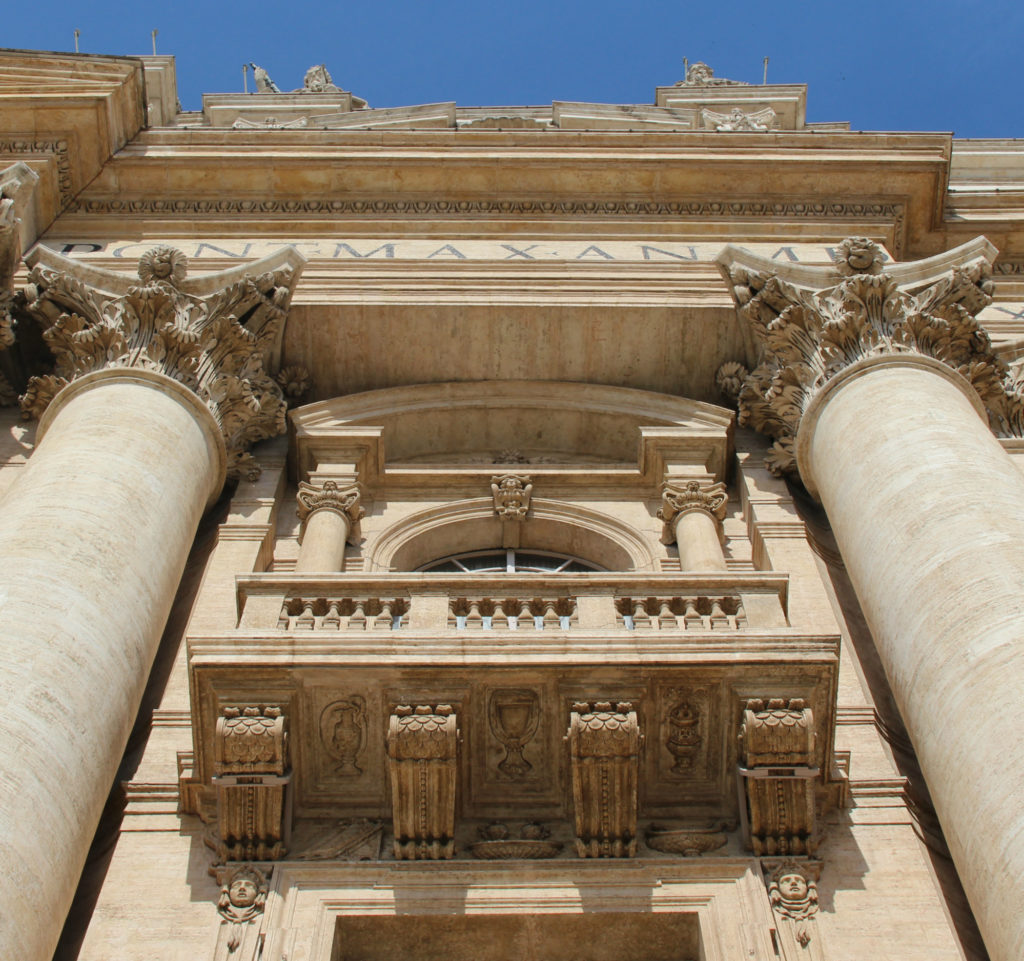


Upon entering the Basilica, the picture immediately below was our first view of the church. It was amazing. We then saw Michelangelo’s Pieta. It is in the back of the Basilica in the Chapel of the Pieta. Michelangelo carved it when he was only 24 years old.


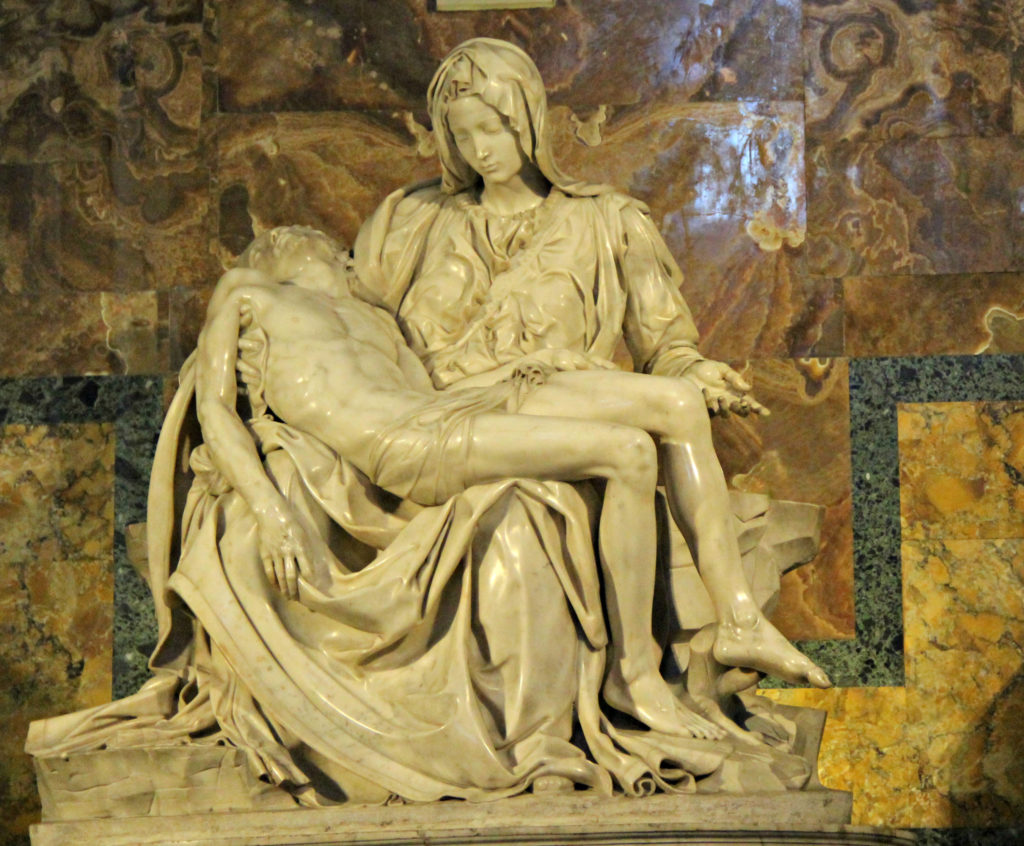
There is beauty throughout the church. I have included just a few examples here. The picture immediately below is in the Baptistery Chapel. It is a mosaic that was made in 1722. It pictures the baptism of Jesus by John the Baptist in the Jordan River.
The statue that follows honors the woman in the oval frame. She is Maria Clementina Sobieska and is one of three women honored in the Basilica. Her picture is held by a statue representing Charity and a cherub.
The next picture is a marble font which holds holy water. Cherubs are on either side of the font. The final two pictures are of cupolas in the Basilica.
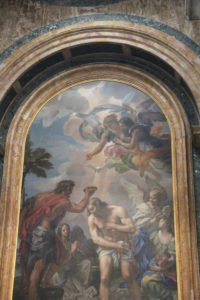
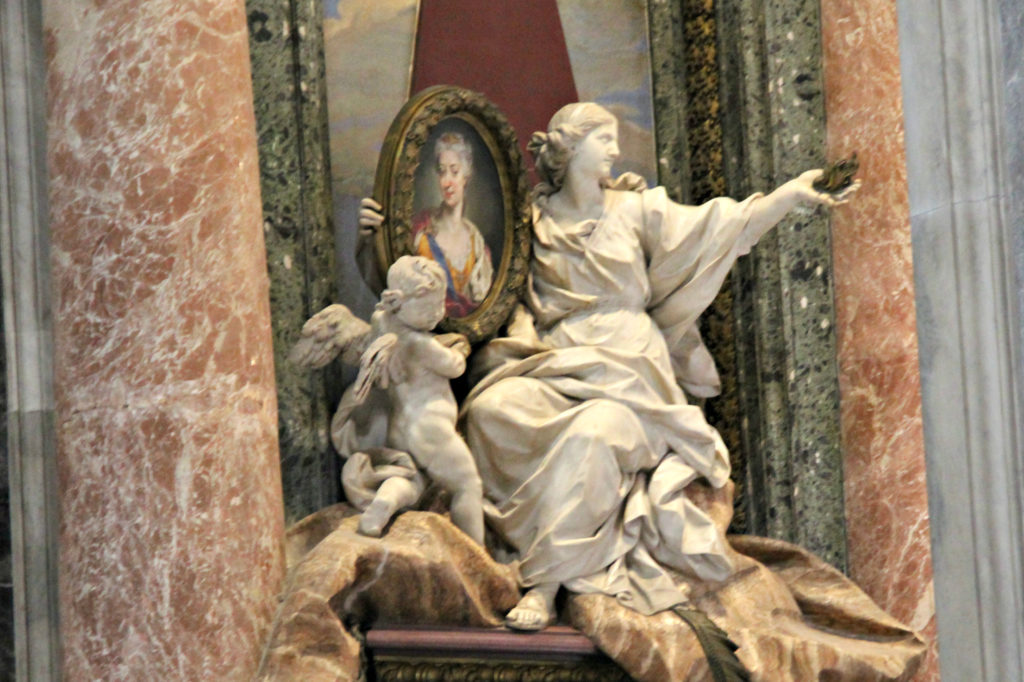



The picture below is very top of the Baldacchino. It is 95 feet tall and sits over the papal altar. The day we visited, we were unable to see the altar because there were so many people. The altar was placed over at least two older altars. Only the pope can celebrate mass from this altar. The Baldacchino was created in the 1600’s of bronze that had been taken from the Pantheon. St. Peter’s tomb is said to lie 23 feet below the altar.
The third picture is the great dome and is above the Baldacchino. Along the base of the dome are Jesus’ words to Peter: “You are Rock and on this rock I will build my church; to you I will give the keys of the kingdom of Heaven.” The letters are eight feet high.
The final picture in this section is the Chair of St. Peter. It is a wooden chair that is believed to have been used by Peter when he served as Bishop of Rome. The chair has been encased in a bronze sculpture created by Bernini. Above the sculpture is a window made of Bohemian glass. It is divided into 12 sections representing the disciples. The dove symbolizes the Holy Spirit.



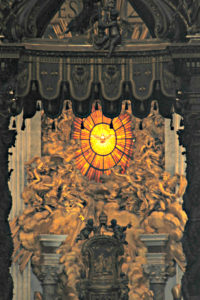
We also visited St. Peter’s Square and the Basilica in the evening. These are some of our pictures from that visit.
